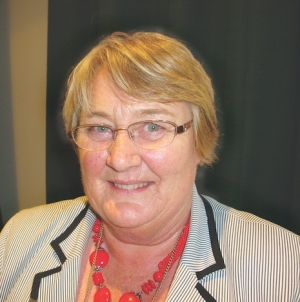So the school year start is a timely reminder that motorists must slow to 20km/h when passing school buses if children are boarding or alighting, says Rural Women president Wendy McGowan.
The 20km/h speed limit – applying to vehicles travelling in both directions – is among the most flouted rules in the road code, says McGowan. Rural Women hopes flashing 20km/h signs on school buses are approved for legal use this year.
The flashing signs, extensively trialled in Ashburton by roading research company TERNZ Ltd and New Zealand Transport Association (NZTA), alert drivers that they’re about to pass a school bus and must slow down. The signs carry the message ‘Either way it’s 20K’.
A key part of the trial was installing bright, 20K signs on the front and rear of the buses that lit up when the doors opened, and included flashing wig-wag lights to attract drivers’ attention well in advance. The three-phase trial began with an intense awareness campaign, followed by targeted police enforcement.
Rural Women was also involved and McGowan says, “The trial shows there’s still a way to go. Ashburton drivers are still passing school buses at twice the legal speed limit on average, but it’s certainly a step in the right direction.”
Before the campaign began, the average speed of drivers passing a stationary school bus was 80km/h. Now drivers are slowing to an average of 40km/h, slowing noticeably on main roads and open rural highways.
“You should slow down to your 20km/h because children are quite unpredictable and some just fly across the road in front of you,” McGowan told Rural News.
Many rural schools are in 100km/h areas. “It would be nice if motorists could see the lights flashing, and know the bus door is going to open and that they should stop. In other parts of the world, if the light is there they know to stop and everyone does.
“It is a matter of making our roads safer because we have lost too many children.”
Peter Baas, managing director, Ternz Ltd, told Rural News on average about one child a year has been killed outside schools in the last 22 years.
The 20km/h illuminated school bus signs are legal speed limit signs that can be enforced, so they have to apply to the NZTA for formal legal approval to use them. They have temporary approval until June for the trials.
“We are still analysing the results – still collecting speed data with a radar detector on a bus and that comes on whenever the bus is stopped and the doors open.” That work is still being done in Ashburton with some earlier work in Matamata.
Ternz will make recommendations to NZTA in June and it will be up the authority and the Minister of Transport whether they are approved on all school buses. Whether they are made compulsory will be another consideration, but they will then have to be paid for by the Ministry of Education.
“The project is being funded by the Road Safety Trust which is now taken over by NZTA who are heavily involved as is the Ministry of Education,” says Baas.
McGowan says rural communities are right behind this campaign, and some have started fundraising for signs on their local school buses. “We are just waiting for them to become an approved sign. In the long term we’d like to see 20K signs installed on all school buses throughout the country.”

















